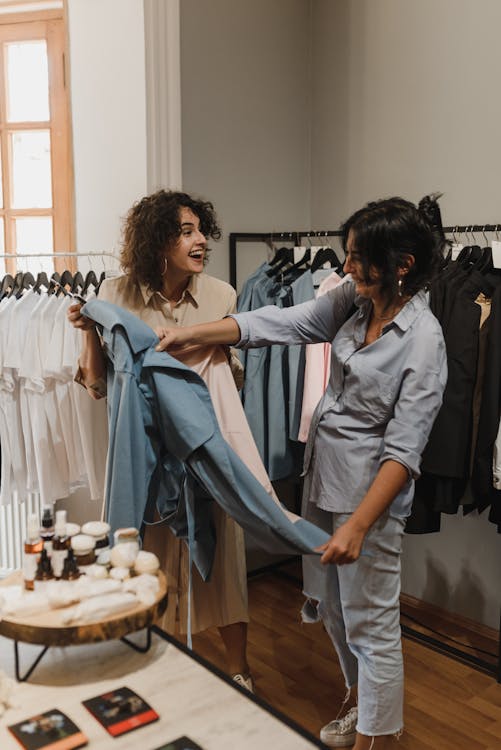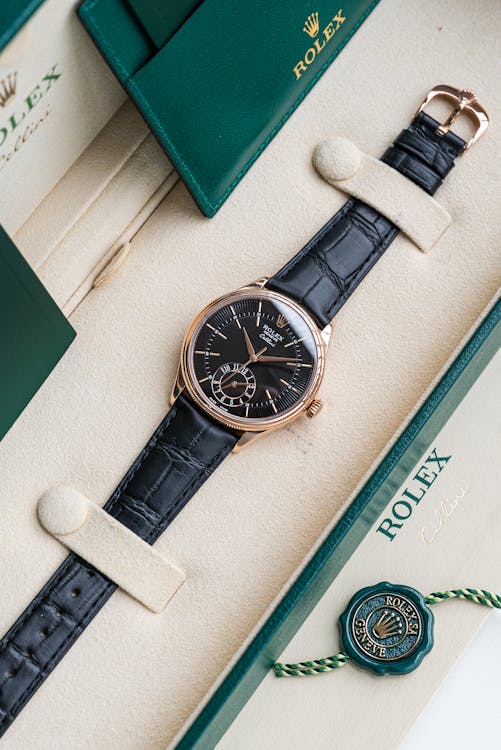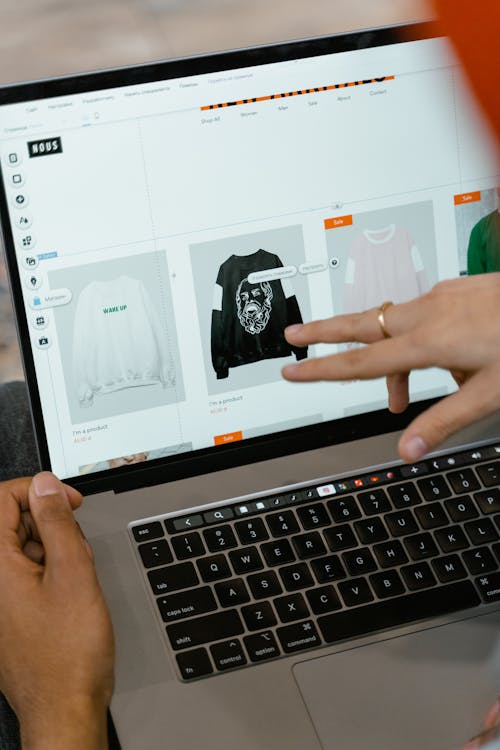As more and more organizations embrace an omnichannel approach, the need to set each selling channel apart grows. Due to the restrictions associated with selling on platforms you do not control, your website serves as the central location for carefully monitoring and boosting engagement and conversions.
Consumers want experiences from online retailers that they can’t get from Facebook or Amazon. This is the role that visual merchandising plays. Let’s learn more about what visual merchandising is and how greatly it affects a customer’s trust in a brand.

Visual Merchandising eCommerce
The following tactics are essential for successful online visual merchandising for an e-commerce platform:
Create an Online Window Display
First impressions are crucial in the retail industry. As such, the window display is typically where visual merchandising for actual businesses begins. Even though they might not have a storefront display, online businesses do have a homepage on their websites. Online businesses have an advantage over traditional stores even if they only have roughly 50 milliseconds to establish a solid first impression.
Brands can utilize behavioral data to tailor their homepage to individual visitors, showing offers or products that are relevant to them i.e., things they’ve seen but haven’t purchased or comparable items.
Enhance Your Website Layout
The arrangement of a shop is crucial. To maximize their potential, you must determine which regions of your store receive the greatest traffic. Just as important is the website layout of an e-commerce store. In the end, companies ought to try to customize their website design according to the user. Rearranging product categories or content according to site visitors’ identities and points in the buyer’s journey is a simple method for accomplishing this.

Ensure Easy Navigation
Physical merchants employ features like information desks and overhead signs to optimize their in-store layout. These aspects of the shopping experience greatly facilitate customers’ discovery of products and encourage them to buy them.
Using noticeable categories and subcategories online will have the same effect. Additionally, brands can use visual search or autocomplete. The latter is similar to the information desk at a physical store in that it enables customers to search for an item in particular by submitting an image of it. However, businesses must leverage product qualities to ensure that buyers can locate what they’re looking for.
Create Exceptional Product Pages
Stores with purely virtual product displays have issues with customers trying out their products. Although e-commerce companies are starting to test online fitting rooms, a quicker fix is to use clear and concise product descriptions and images.
Consumers consider the quality of the photos to be very important when making an online purchase. To present their products from every viewpoint, online retailers should use clear product photography and videos. They should also include a few lifestyle photos and highlight any noteworthy characteristics. Images from past customers may also be useful.
Bundle Products
To boost in-store sales, visual merchandising teams frequently dress mannequins in whole ensembles or arrange comparable products close to one another. This strategy, called “bundling,” works wonders in persuading buyers to purchase goods they might not have otherwise considered.
Similar to this, certain in-store merchants could provide clients with multiple “options” for styling a particular item. Products can be bundled in an online store just as easily. This helps customers who might be unsure about how to dress a certain piece and, as a result, increases basket size.

Web design visual merchandisers
The following advice can help you succeed if you are aware of the golden guidelines for visual merchandisers as a web designer:
Utilize Colors
Thanks to colors alone, you can dress up to make an impression, influence others, increase confidence, or even show off your social rank or status. Color influences how one forms attitudes and insights in the business world. Strong color schemes can make your store appear lively, while soft color schemes can provide a relaxing, tranquil atmosphere. When a customer is surrounded by color, it can have an impact on their emotions and moods, thus while visual merchandising, it’s always a good idea to consider what color scheme would work best for them.
Create a Brand Vision
If you don’t completely understand your brand, you’ll be easily taken in by trends that usually last for a few weeks or months, making it difficult to keep track of what you’d like your brand to achieve and what goals you need to reach in the days ahead. To ensure that your goals remain loyal to the core of the brand, consider creating a vision and mission board in addition to a five- or ten-year plan.

Focus on Your Target Market
You get the advantage of building stronger connections with your customers when you know how to pique their interest and enter their minds. Customers will feel that you understand their needs, wants, and the reasons behind their purchase when you employ this kind of approach. Furthermore, as you make an effort to fully comprehend your customers and provide a strong connection with your product through visual styling, this results in deeper levels of experience for both you and your clients. So bear in mind that the greatest method to stay afloat in a pool of thirsty customers is to constantly be studying and analyzing your target market.

Create an Exceptional Visiting Experience
Experience is increasingly valued by consumers over actual products. It’s challenging to maintain original and creative ideas when the great majority of stores open and close regularly. Customers are constantly in for a unique experience, therefore your layout ideas should always aim to inspire, astonish, and surprise them. For this reason, some stores create an immersive environment by adding fun components to the scenario.
Incorporate Key Elements Strategically
Additionally, elements are essential to visual merchandising. It’s difficult to arrange things in a display correctly since you have to consider both the positive and negative space that the products create in your store. Making the most use of available space is what makes customers enjoy the characteristics and uniqueness of your store. Everything from product accessibility to merchandise flow and navigational elements influences why customers choose to visit and make a purchase from your store.
Online visual merchandising of apparel websites
The industry is realizing that new technology can help address the needs and requirements of clients in the apparel sector, therefore, here are some ways to help you create efficient online visual merchandising for your apparel website:
Virtual Dressing Rooms
Customers can electronically try on things in virtual fitting rooms (VFRs). An integrated system called a virtual try-on system makes it possible to virtually try on clothes, cutting down on time spent in stores and pointless trips to the mall. Having a computer or smartphone, customers can use their house or any other location to try on clothes without actually donning them.

Artificial Intelligence
The field of artificial intelligence (AI) has become increasingly important for technological progress. Merchandisers’ jobs have been significantly changed by it, especially in the fashion industry. By analyzing and storing insights across hundreds of images and films using computer vision, AI has helped designers combine key patterns, colors, and styles. This can save lead times and increase creative discovery. To enhance and unify their consumers’ online and offline shopping experiences, fashion companies have also implemented AI into chatbots, AI-powered assistants, and product navigators.
Haptic Technology
In Haptic technology, a technique for presenting images utilizing light transmittance is used to analyze the texture and physical characteristics of the actual fabric to display a fabric’s thickness and thinness and to create a tactile experience on web platforms. When looking at fashion apparel online, touch-related features like fabric scrunch and product rotation can provide an engaging purchasing experience that does not require physical contact.
Collection Based Shopping
Clothing and apparel brands are the ones that use collection-based visual merchandising the most frequently. However, collections aren’t limited to usage with clothing lines. With collections, users may more completely engage with the products they are searching for and explore the website, perhaps increasing conversion and search engine rankings.
Numerous firms decide to include collections on their home pages in addition to their featured or best-selling items. This makes it possible for browsers to navigate to product pages more quickly and to delve deeply into particular categories.

Bottom Line
Visual merchandising plays a pivotal role in building trust among the clients and the e-commerce sites, which is essential for a long-lasting relationship. By working on the beneficial visual merchandising ways mentioned above, you can easily enhance and upgrade your visual ecommerce merchandising game and attract your desired section of customers. For optimum results, incorporate data management tools and software, by contacting us at Pimberly, for a well-aligned e-commerce site.














